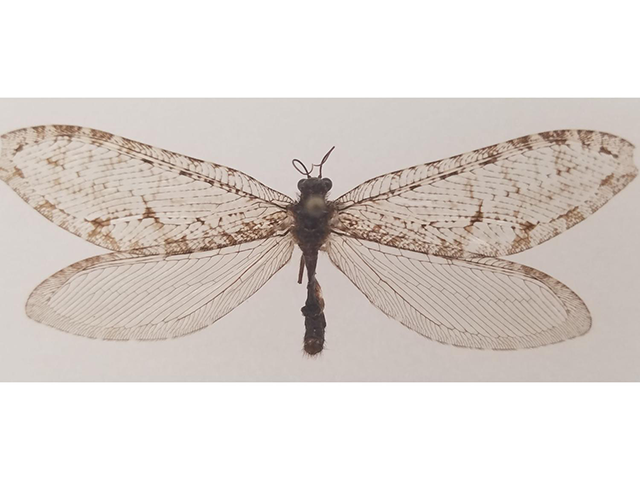A scientist found a strange bug outside an Arkansas Walmart in 2012 — only to discover years later that it was of a rare species from the Jurassic era.
Michael Skvarla, director of Penn State University’s Insect Identification Lab said that in 2012, when he was still a graduate student, he spotted an insect at a Walmart in Fayetteville, Arkansas.
This is a very cool story: @mskvarla36 found an interesting insect at a Wal-Mart and several years later identified it as a rare giant lacewing—the first of its kind recorded in eastern North America in half a century.https://t.co/wbCfLA6miO
— Huck Institutes (@huckinstitutes) February 28, 2023
“I remember it vividly, because I was walking into Walmart to get milk and I saw this huge insect on the side of the building,” he recalled in a press release from the university.
He said he held the insect between his fingers for the duration of his shopping trip and later “got home, mounted it, and promptly forgot about it for almost a decade.”
In 2020, Skvaria was teaching an online class via Zoom, “with students following along remotely on loaner microscopes,” and dove into his own collection of insect specimens, per the press release.
He had labeled the 2012 sample as an antlion — a “dragonfly-like predatory insect” — but noticed the insect’s wingspan was unusually wide for that species. It occurred to him that the insect might be a giant lacewing instead, according to the press release.
“The giant lacewing was formerly widespread across North America, but was mysteriously extirpated from eastern North America by the 1950s,” the abstract of a paper Skvaria published on the finding read. “This discovery suggests there may be relic populations of this large, Jurassic-Era insect yet to be discovered.”
“We were watching what Dr. Skvarla saw under his microscope and he’s talking about the features and then just kinda stops,” a graduate student named Codey Mathis recalled. “We all realized together that the insect was not what it was labeled and was in fact a super-rare giant lacewing.”
The press release noted there are multiple possible explanations as to why the species has become so rare:
Scientists hypothesize the insect’s disappearance could be due to the ever-increasing amount of artificial light and pollution of urbanization; suppression of forest fires in eastern North America, if the insects rely on post-fire environments; the introduction of non-native predators such as large ground beetles; and introduction of non-native earthworms, which significantly altered the composition of forest leaf litter and soil.
However, relying on a dataset of historical giant lacewing sightings, Skvaria’s paper proposes the species “may have always been uncommon in eastern North America.”
The university noted that a DNA analysis later confirmed the sample was in fact a giant lacewing, and the specimen was taken to the Entomological Museum at Penn State. It is expected to be the subject of additional research.
You can follow Michael Foster on Twitter at @realmfoster.

COMMENTS
Please let us know if you're having issues with commenting.